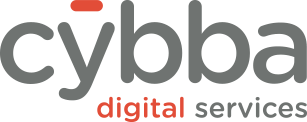Roughly 76% of customers abandon an eCommerce site without making a purchase. There are so many reasons why this happens – product prices, buyer attention span, decision fatigue – and only a few that can be controlled through the website itself. User Experience, or UX, is something that a business can optimize through the strategic implementation of cart abandonment tools. Good UX can mitigate the other obstacles, such as shopping cart abandonment, to drive customers toward a purchase.
Ensure a positive UX for your customers by following these recommendations when incorporating digital marketing tools, such as Cybba’s onsite engagement solution, on your website.
Identify Your Goal
The first step in maintaining good UX for your website is identifying your business goal and aligning every decision around supporting that goal. Are you looking to deliver a marketing message? Highlight a promotion? Prevent cart abandonment?
Establishing a goal can help narrow down which type of onsite tool you will see success with. Each tool, whether it is a promo bar, a mid-funnel display, or a dynamic cart abandonment message can motivate a different type of customer behavior. In recent months, many of my clients have been looking for a way to highlight new processes, and promotions in response to COVID-19. Choosing the right onsite solution to deliver these messages can keep your customer on the purchase journey.
.png?width=600&name=image%20(9).png)
Determine Optimal Time(s) to Deploy Messaging
The onsite tool exists to enhance user experience. Therefore, it is crucial to ensure it is firing at an appropriate time to keep a customer engaged. The Cybba onsite tool can be set up to fire on exit intent, page load, or triggered by the items in a user’s cart.
The frequency of onsite messages should also be considered. Interrupting a customer’s shopping experience with overbearing messaging or excessive marketing detracts from UX and discourages them from purchasing. With our hospitality clients, we’ve seen that a promo bar can be a non-obtrusive way to link your prospective guests to new cleaning protocols, and a mid-screen onsite message highlighting extended cancellation polices performs well. Businesses are using these tools proactively to set prospective guests’ minds at ease.
.png?width=600&name=image%20(10).png)
Create an Attractive and Interactive Onsite Message
To maintain good UX, it is critical to ensure that an onsite solution is visually pleasing and appears native to the site. The onsite can take on many formats depending on the goals you’ve established. Your messages can highlight a sense of urgency, provide a promotion to first time buyers, or even take a dynamic approach and recommending products based on the user’s journey on the site – so long as these messages are synched with the brand’s visual image and provide some type of value to the customer. Throughout the pandemic, many highlighted their no contact delivery, take out options within the restaurant industry, or even a variety of at home service. These branded and educational messages encourage customers to complete their purchase rather than abandoning.
.png?width=600&name=image%20(11).png)
These are just a few ways an onsite tool can help to build an intuitive and effective User Experience on your website. Reach out to Cybba to learn more about how we combine business and customer goals so that everyone wins.


